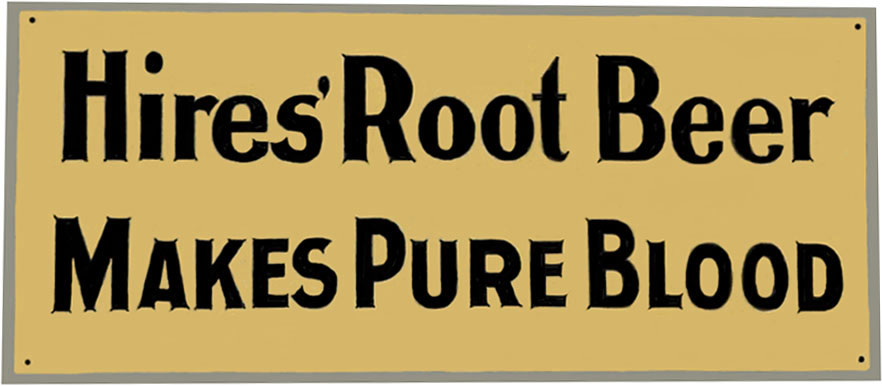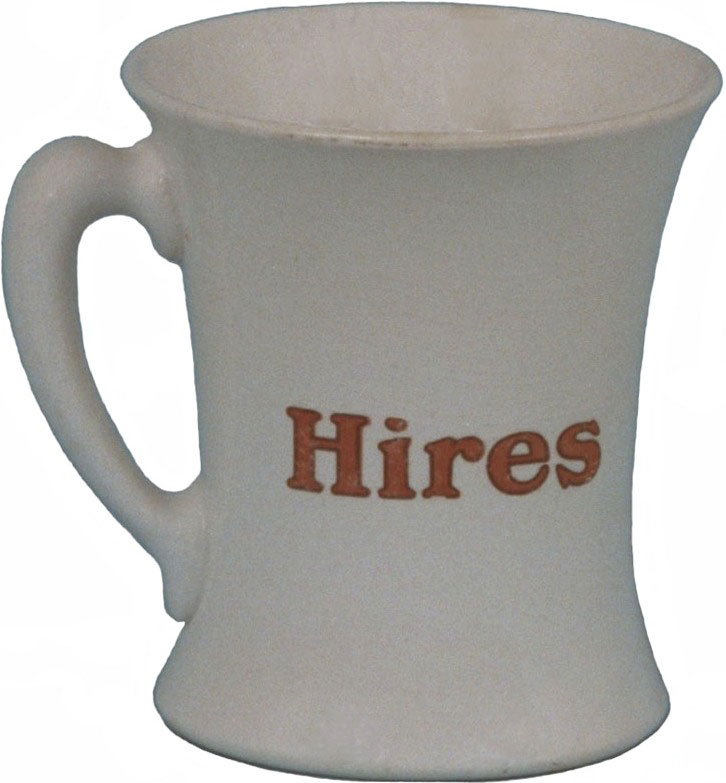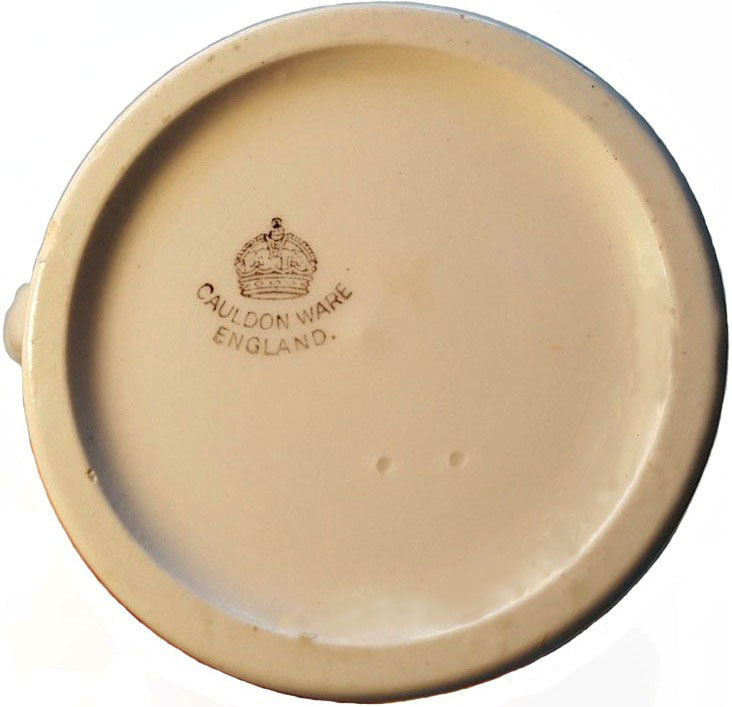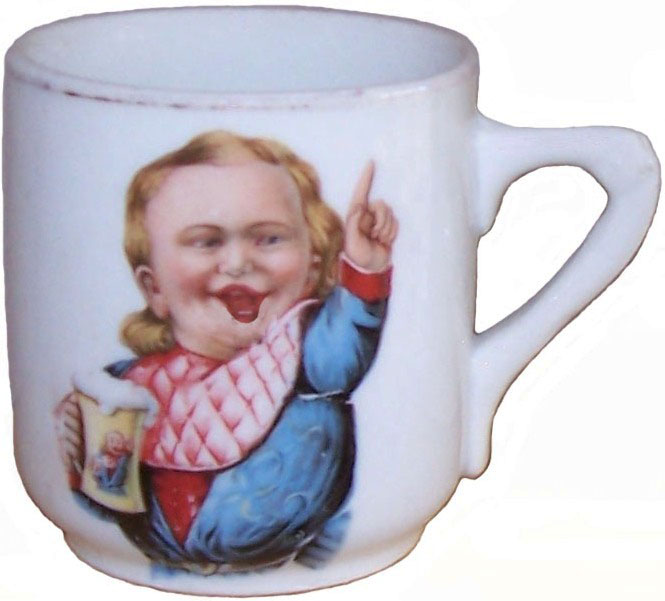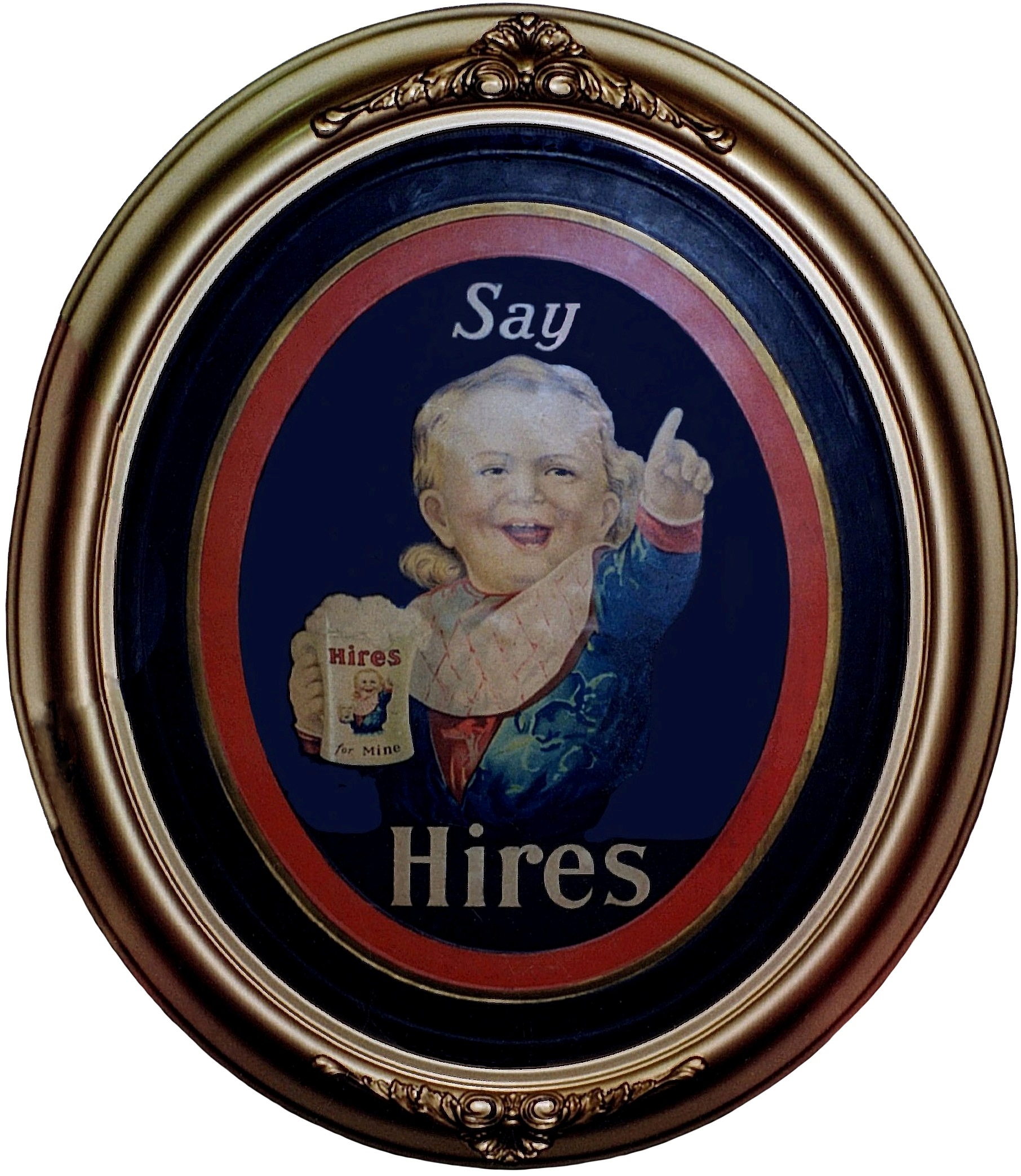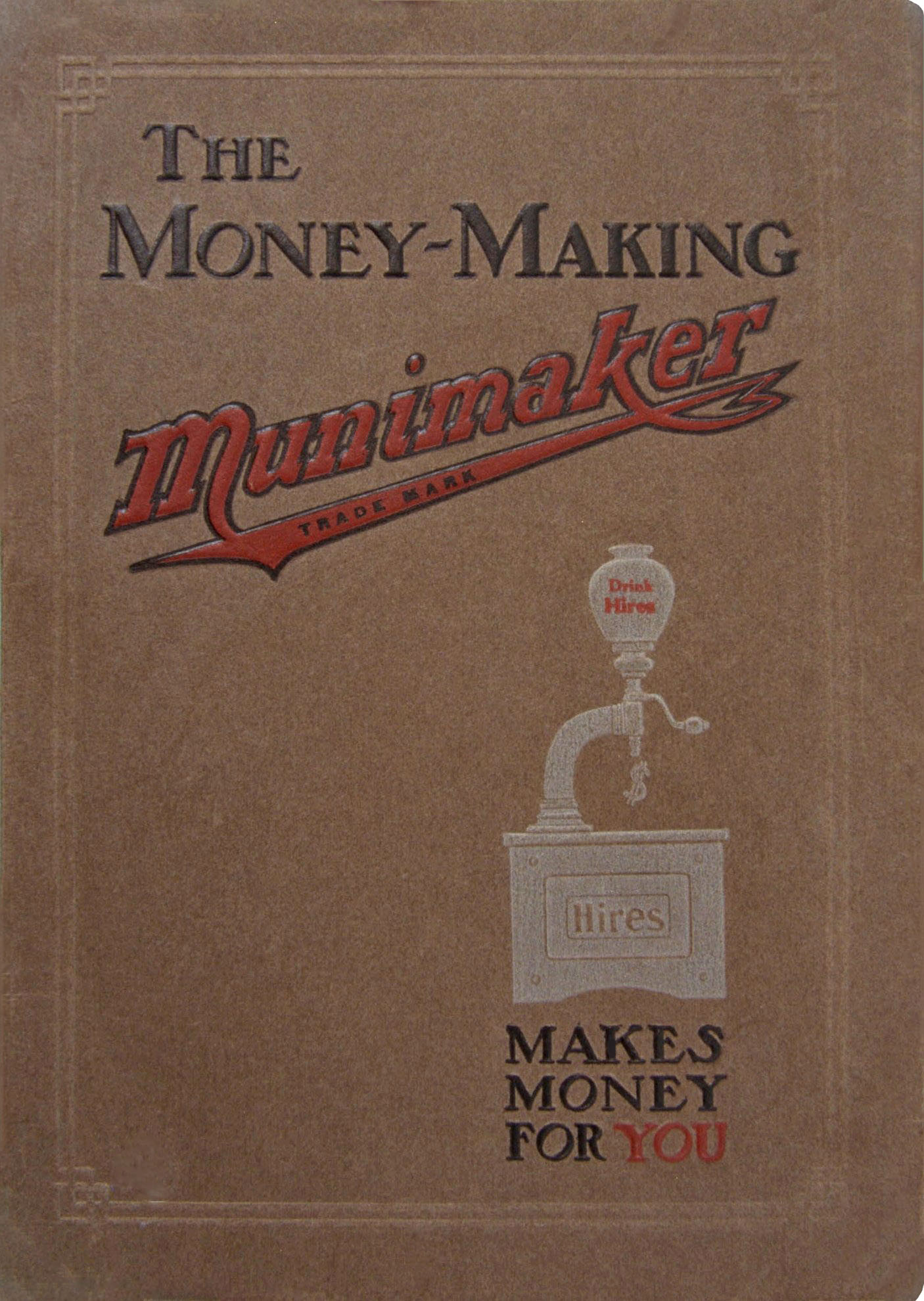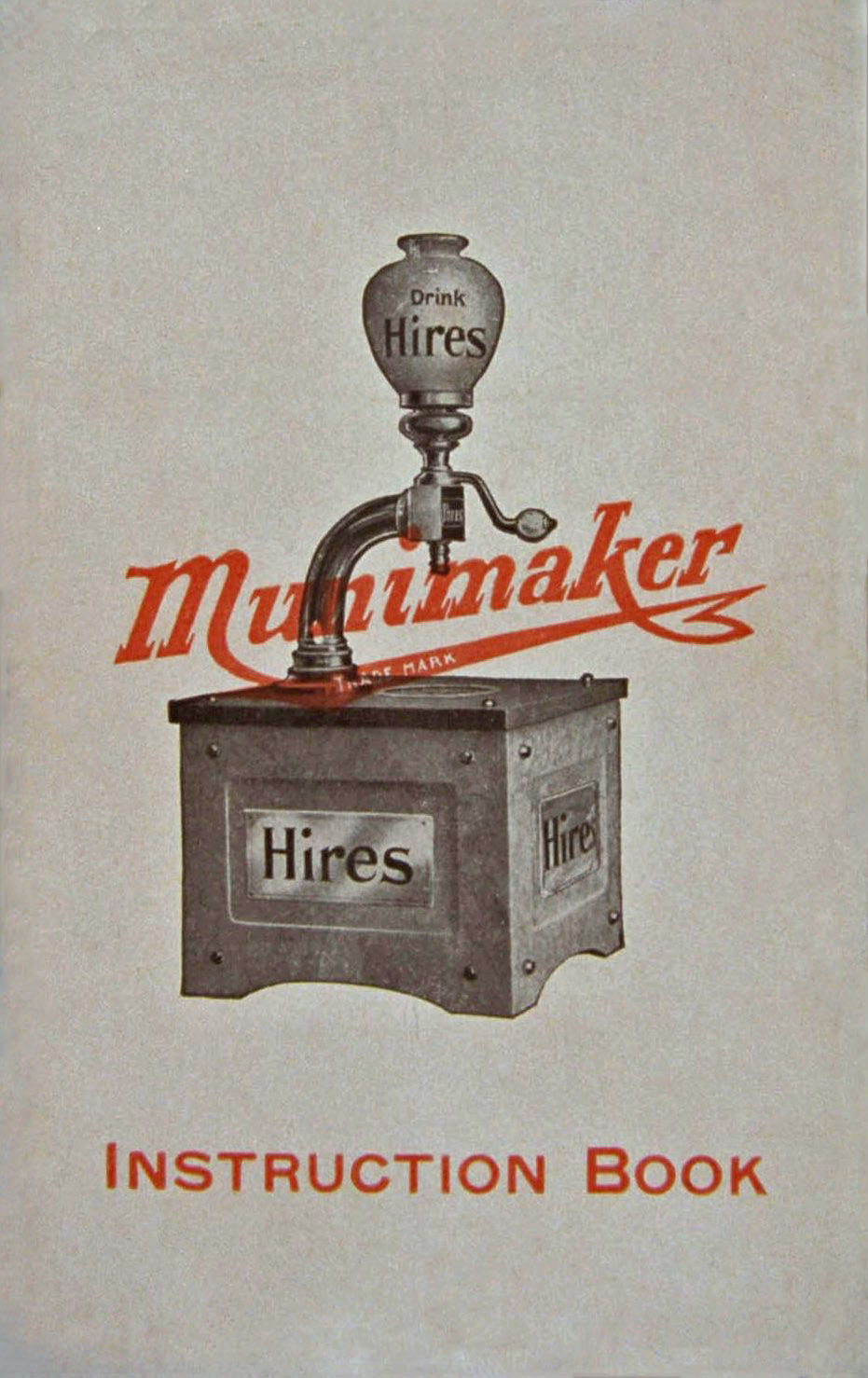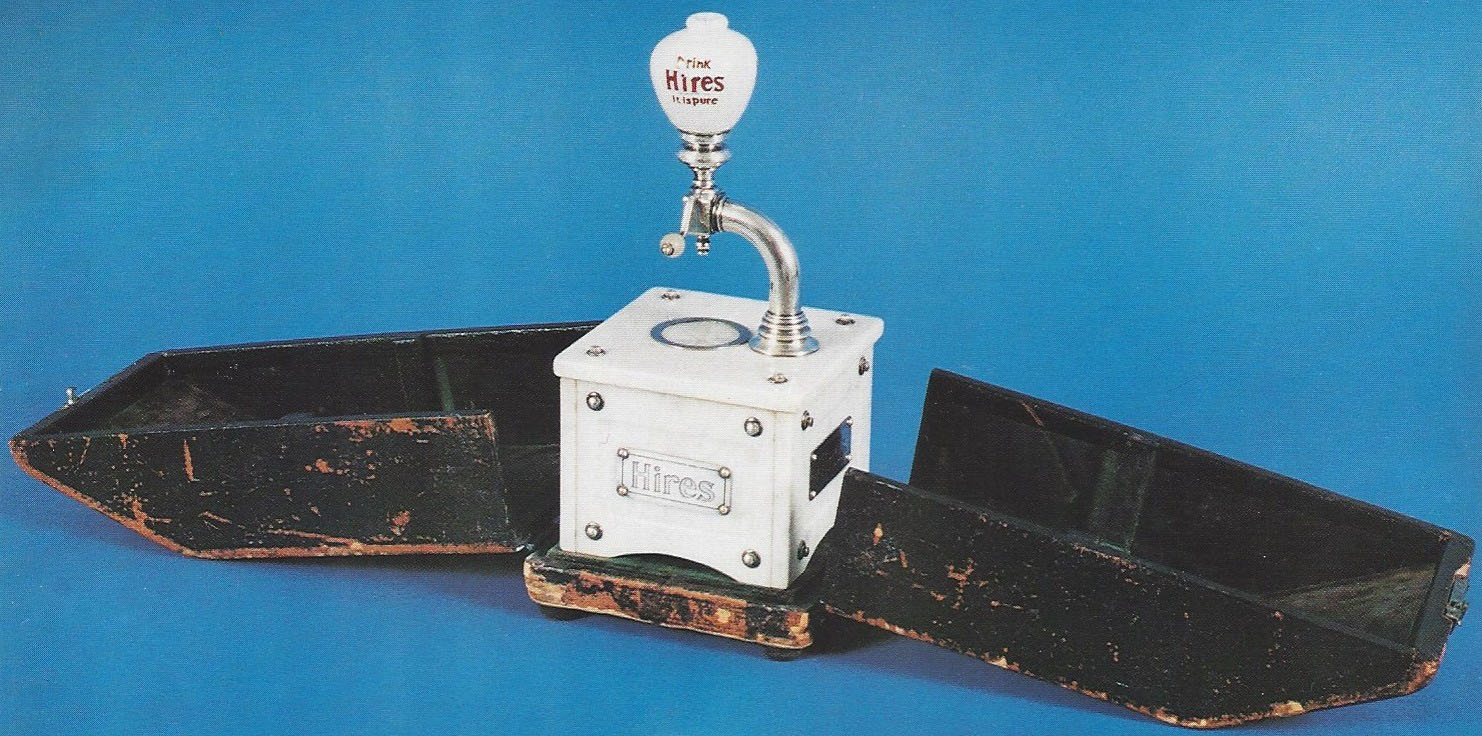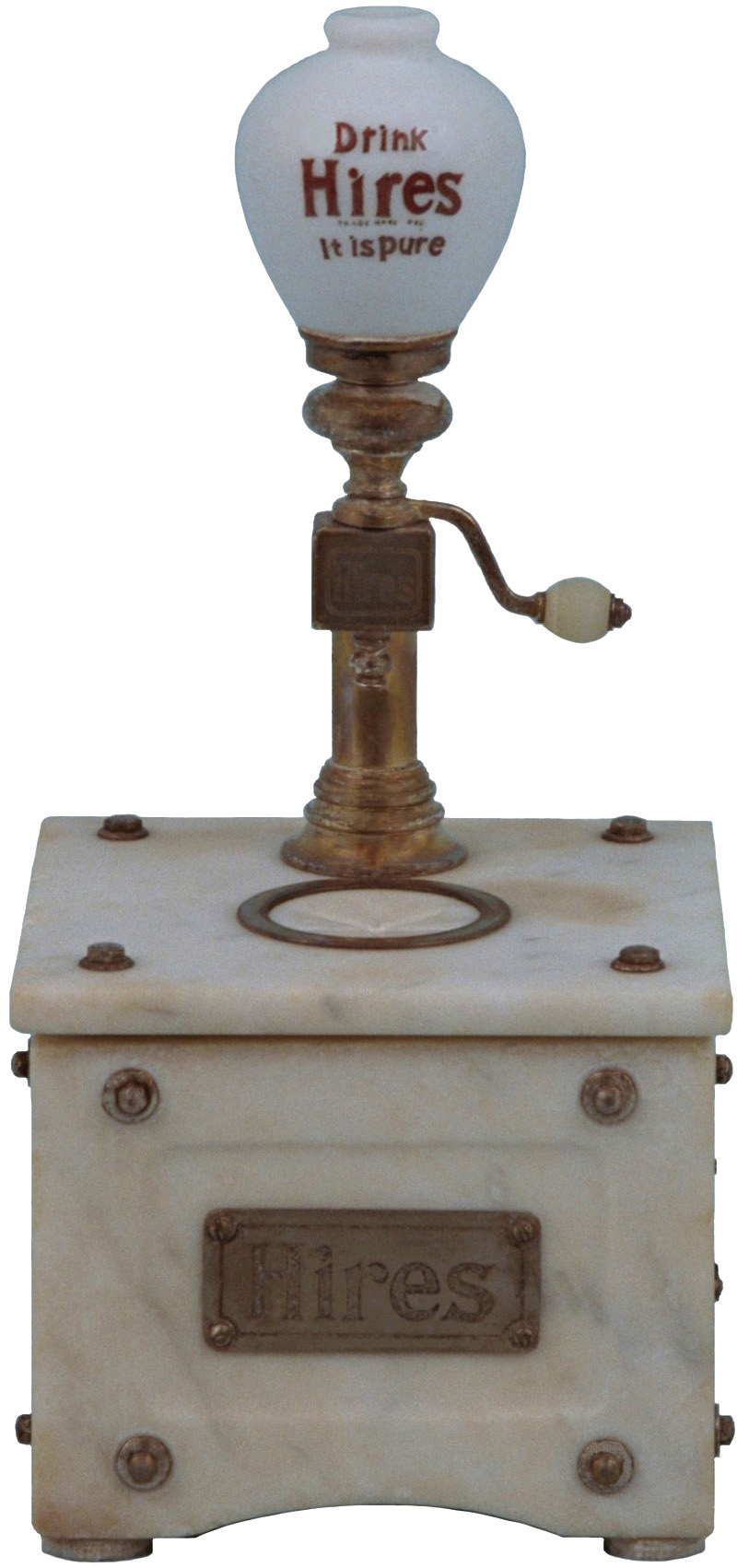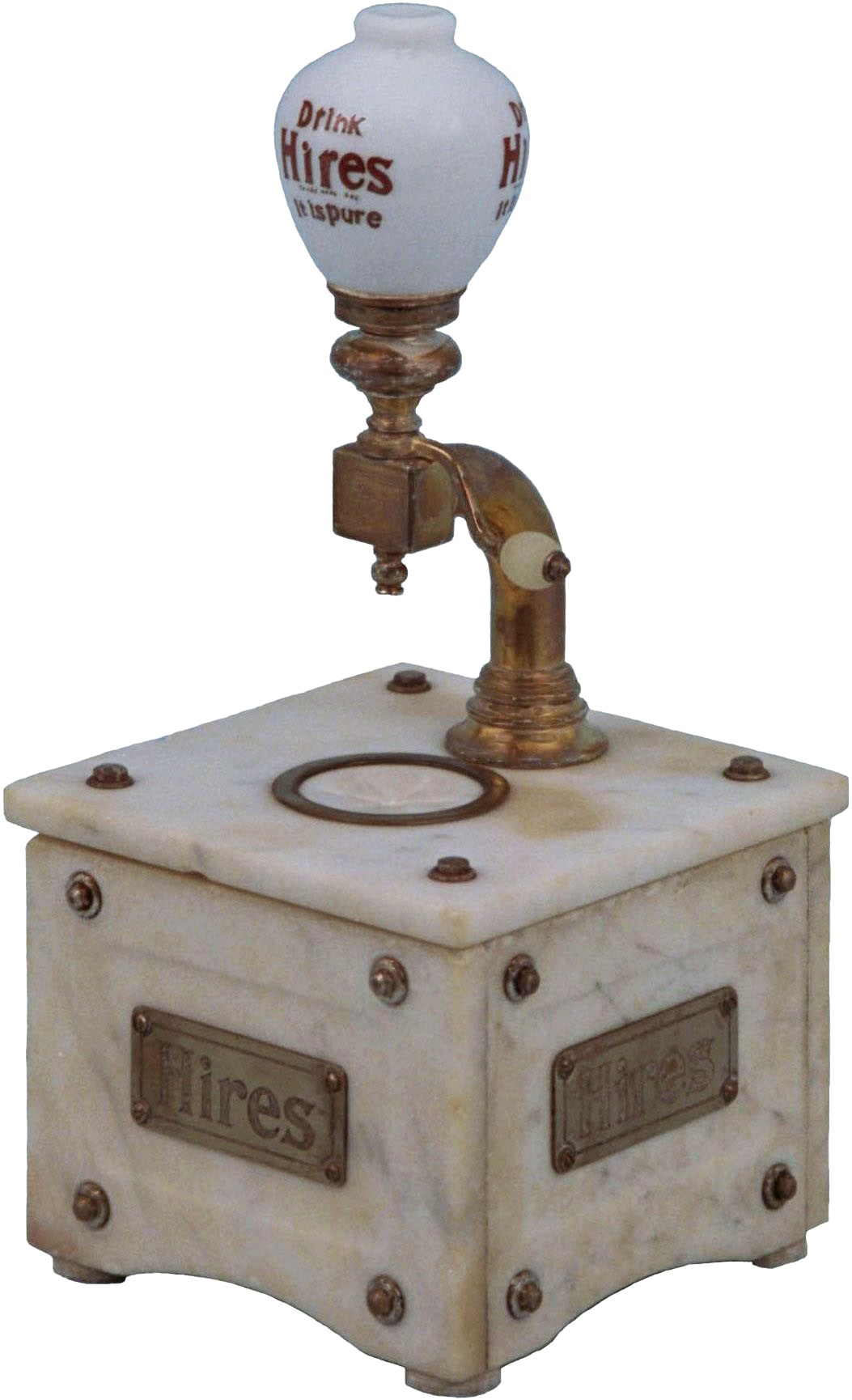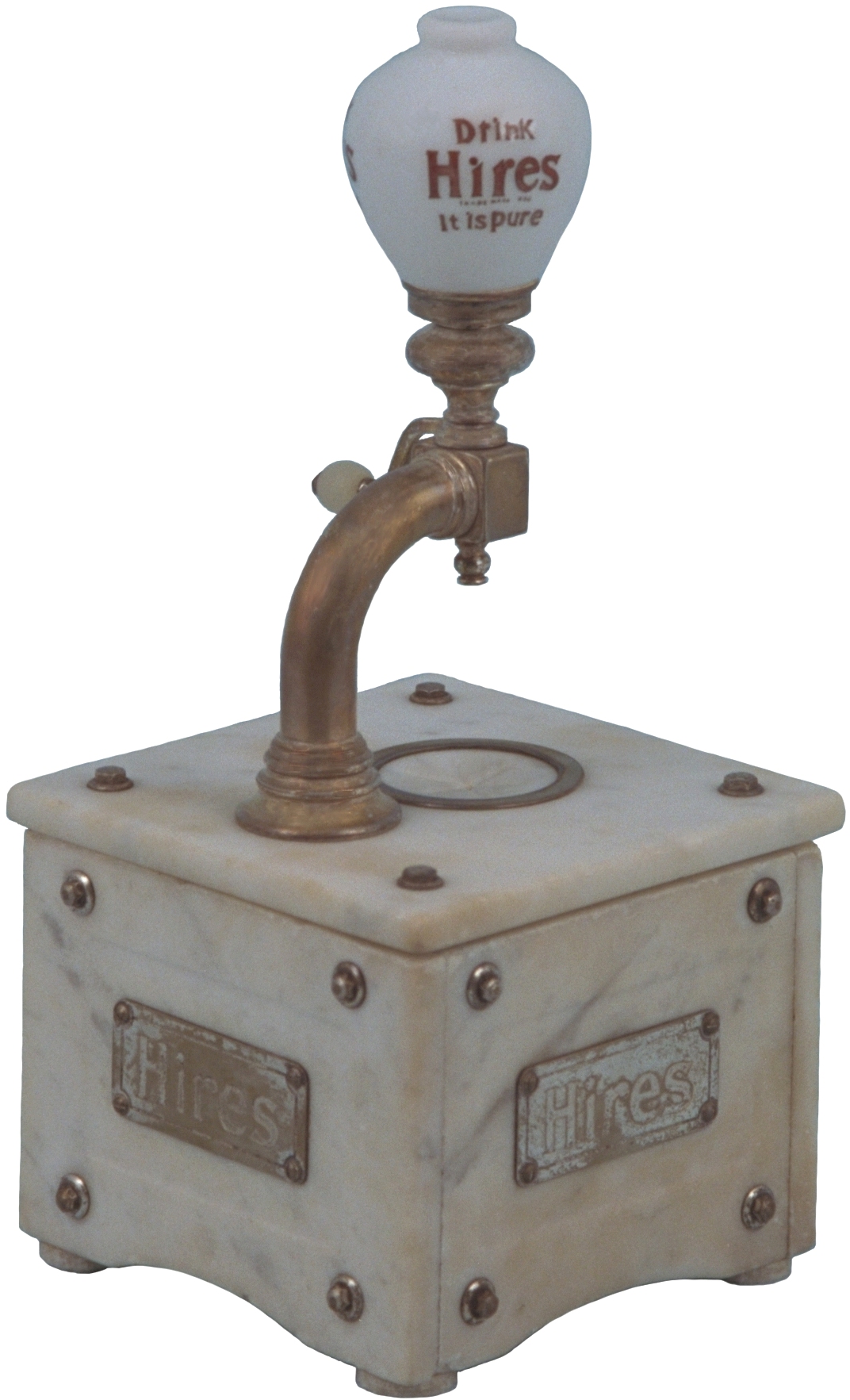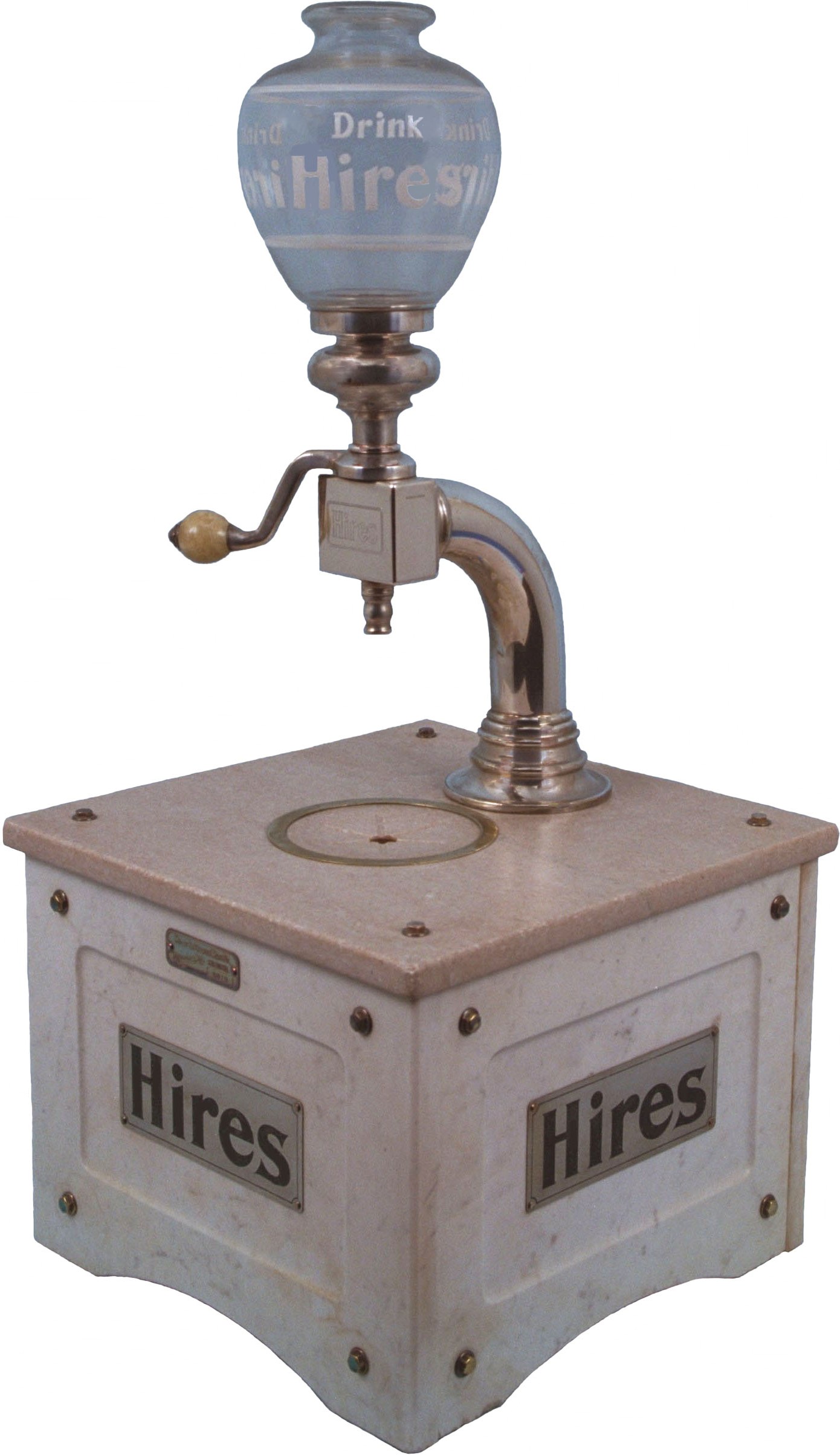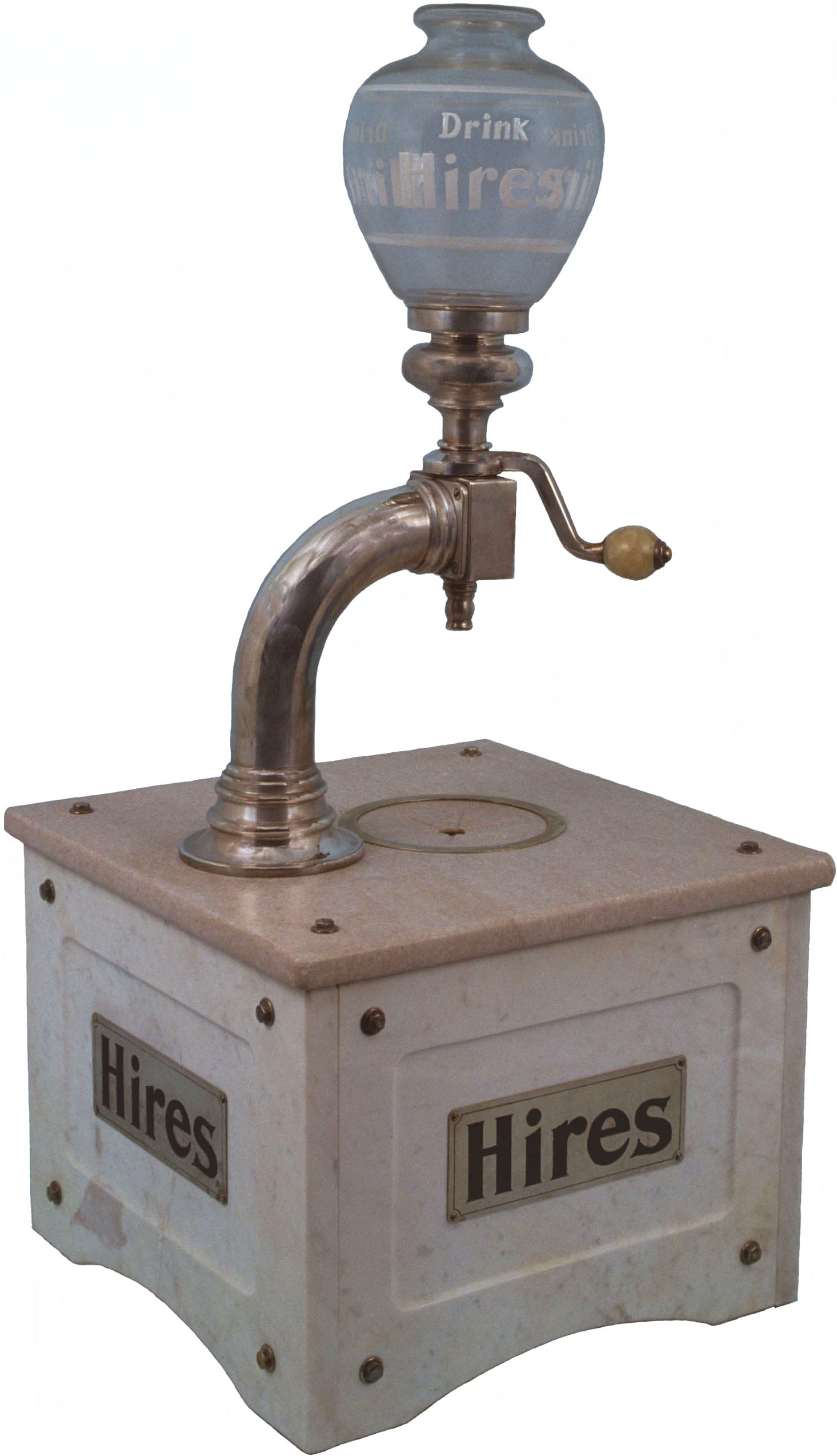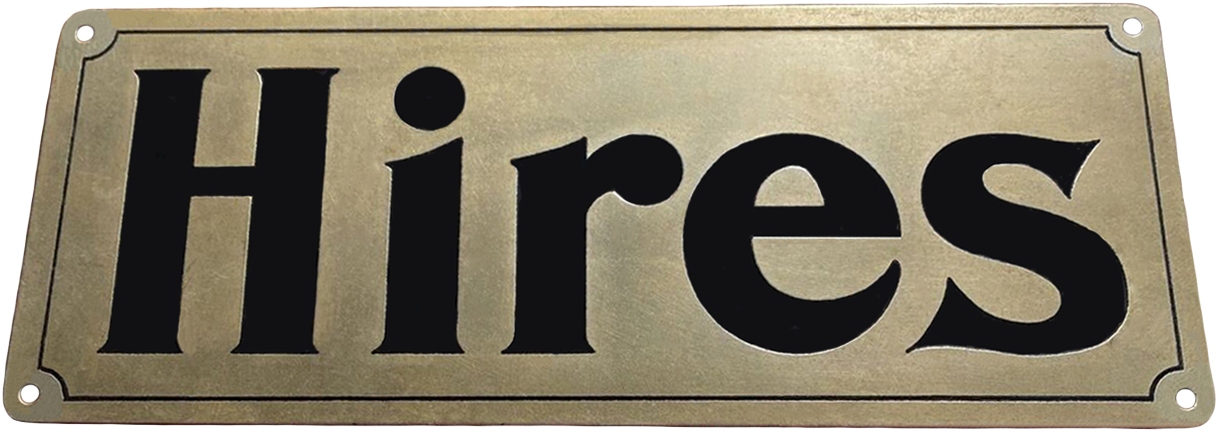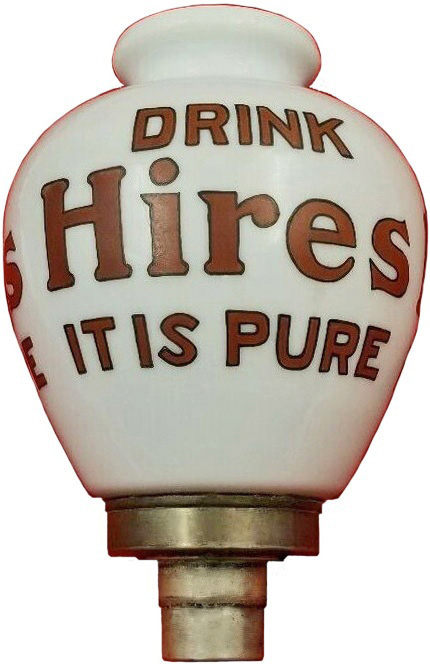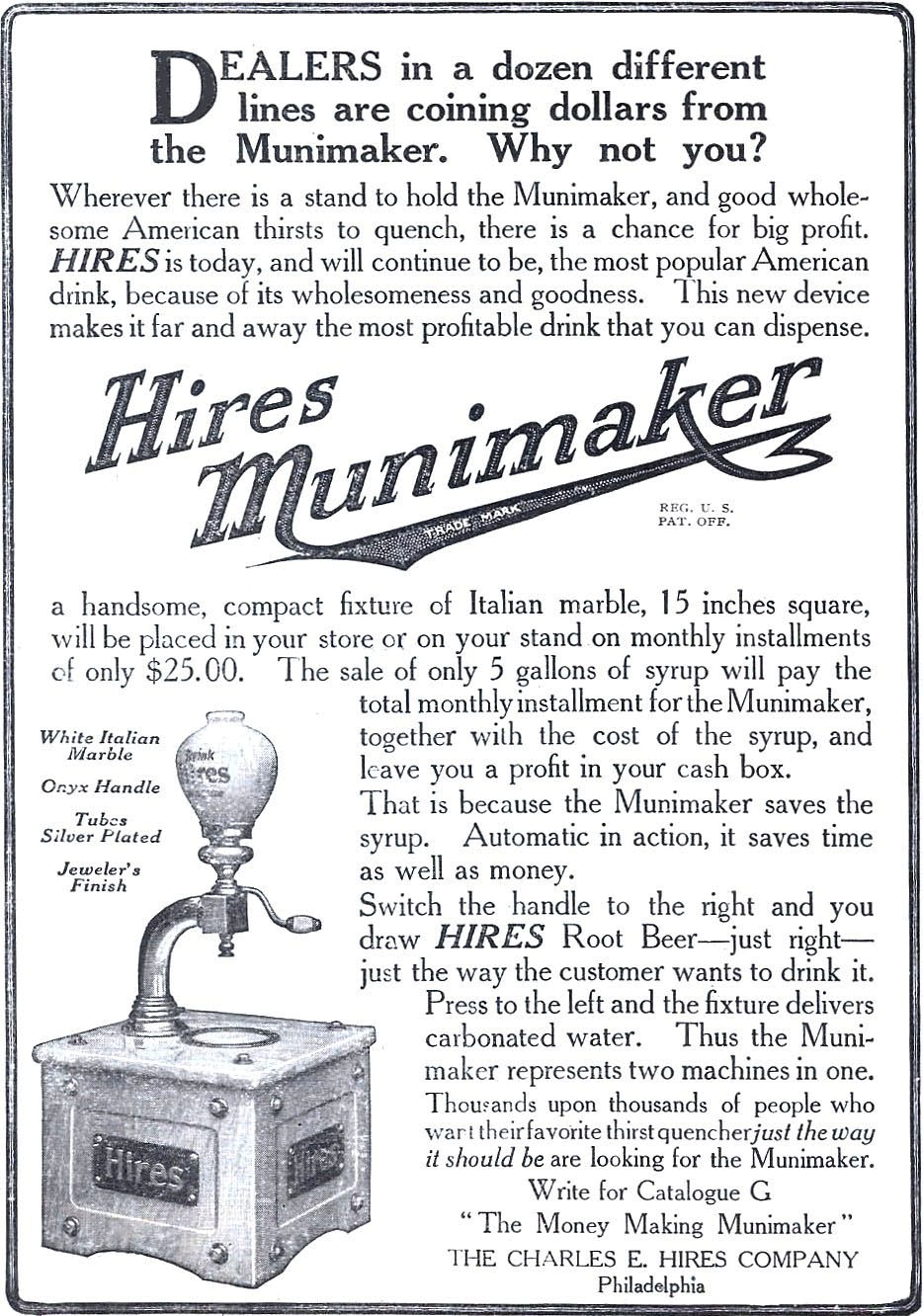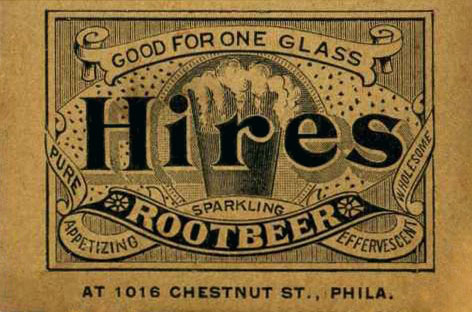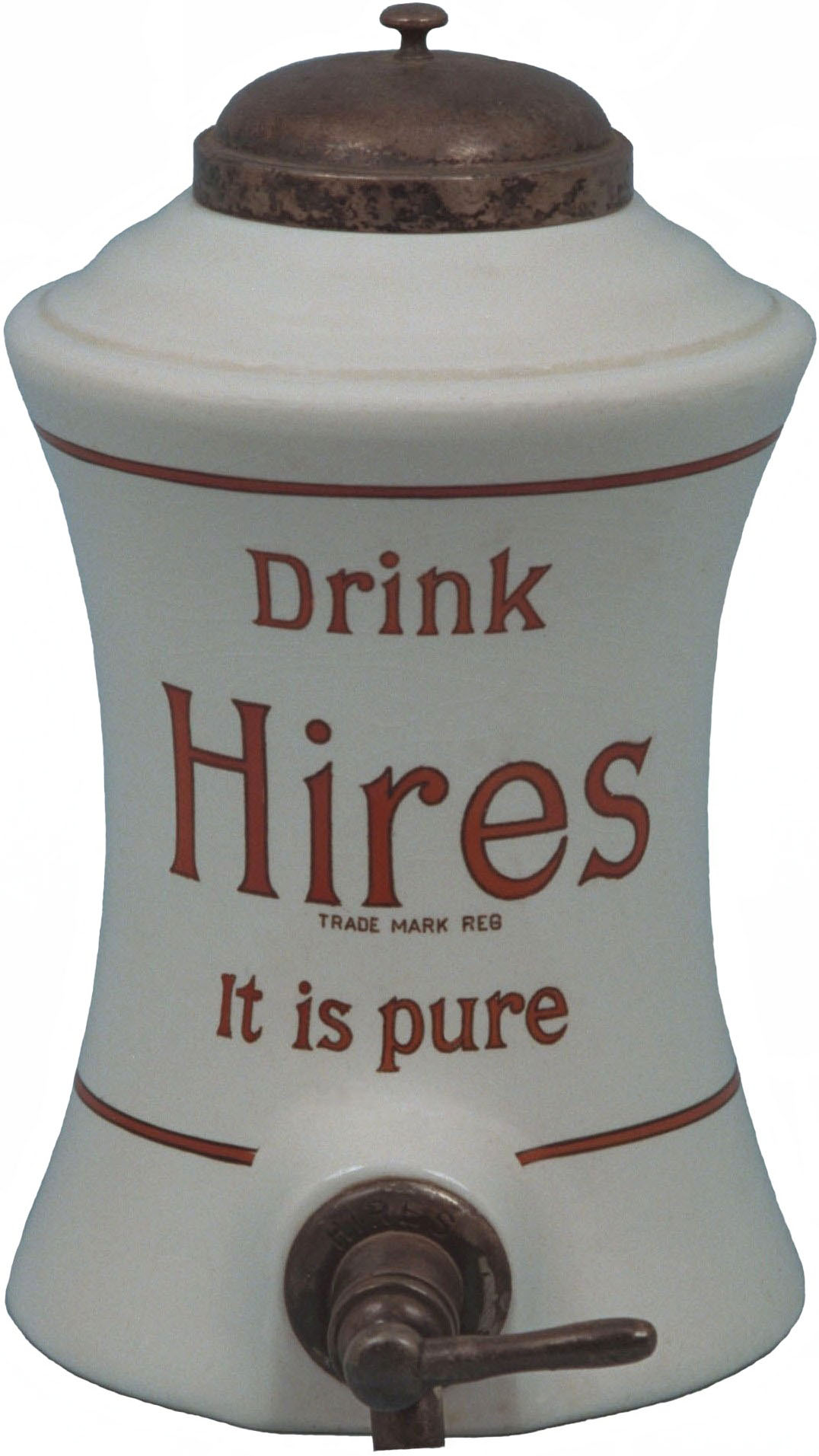1905
IT HAPPENED IN…1905
President Roosevelt arranged a peace conference
that ended the Russian and Japan war.
The Supreme Court upheld state authority to
enforce compulsory vaccination laws.
State laws limiting working hours were ruled
unconstitutional by the Supreme Court.
The number of registered automobiles in the U.S.
rose to 77,988.
With federal product legislation looming, the N.
W. Ayer & Sons agency decided to no longer advertise patent
medicines.
Popsicles were introduced.
Iron Brew and Iron Beer, two new soft drinks,
were introduced.
(Figure 1905-01, tin tacker)
(Figure 1905-02, canvas
banner, 13.0” x 49.0”)
The American Lithography Company in New York City
produced this attractive poster.
(Figure 1905-03, paper poster,
30.0” x 42.0”)
C. Tielsch & Company in Silesia, Germany manufactured
this porcelain mug. It is 4.0" high with a 3.375" diameter,
unmarked base.
(Figure 1905-04, C. Tielsch &
Company porcelain mug)
This porcelain mug was manufactured by Caldon Ware in
England.
(Figure 1905-05, Caldon Ware
porcelain mug, front)
(Figure 1905-05, Caldon Ware
porcelain mug, base)
This porcelain china mug doesn't bear any maker's marks:
(Figure 1905-06, porcelain
china mug, 2.5” high and 2.0” base diameter)
(Figure 1905-06.5,
cardboard sign in oval frame)
“The Story of Hires” published in the April, 1921
issue of the Printers’ Ink
Monthly journal described a major change in direction for Hires in
1905. The article’s author,
Roy W. Johnson, introduced this development, followed by quoting Charles
E. Hires’ comments:
Of course it is obvious that there have been many
changes and new developments in the forty-odd years during which this
product has been on the market.
Comparatively few products have come down to use from that early
period, and most of them that have done so are in the class of staple
necessities. That a
specialty so clearly in the luxury class as root beer has done so is no
small tribute to the merchandising ability of its proprietor.
For just at the time when Hires’ Root Beer had attained its
majority, so to speak, a new factor appeared on the scene which required
an entire change of base so far as merchandising and distribution were
concerned. That factor was
the soda fountain, primarily an adjunct of the drug trade, while the
distribution of Hires’ Root Beer (household extract) was almost
exclusively confined to the grocery trade.
“Of course the soda fountain had been in use for some years,” said Mr. Hires, “and druggists used to buy the household extract for the purpose of making their own root beer syrup. There was a good deal of substitution going on all the time, and the customer who asked for root beer at a soda fountain might get ‘Hires’, but was quite likely to get some concoction put up by the druggist himself or by some wholesale drug house. That was not very serious, because the soda-fountain trade did not amount to much anyway. Then came the tremendous advertising campaigns for Coca-Cola and other ready-prepared syrups, which began to bring the soda-fountain trade into its own. From a negligible factor the fountain became a very serious competitor. The home brewing of root beer was driven farther and farther back into the strictly rural districts, and more and more people lined up in front of the marble and onyx counters to drink – something else.”
“But when I suggested putting out a fountain syrup, I
came into conflict with my own sales force.
Their customers were the wholesale grocers, and to put out a
fountain syrup would be competing with our own trade, they said.
On this account I hesitated, much longer than I should have done
perhaps, and it was not until the season of 1905 that we put out any
Hires’ syrup at all. By
that time it looked to a good many observers as if the market had gotten
away from us indeed, and I was told more than once that it was a
hopeless job to get distribution in a new field which already was
plentifully supplied with ‘root beers’ of one kind or another.
Advertising could not help me, some people said, because while it might
be possible to persuade people to ask for ‘Hires’ Root Beer’ at the
fountain, there was no possible way to prevent them from accepting any
substitute root beer that came handy.”
“That these prognostications were unfounded is fairly
evident, I think, from the fact that our sales of Hires’ Root Beer for
1920 were in excess of $5,000,000, and by far the greater part of it
consisted of fountain syrup.
The story of the method adopted has already been told in
Printers’ Ink.
It consisted, briefly, of an advertising campaign to induce the
consuming public to ask for ‘Hires’ instead of ‘root beer,’ and a
selling campaign based upon an automatic dispensing machine (a miniature
soda fountain, in fact) which we called the Munimaker.”
(Figure 1905-07, Munimaker
introductory booklet)
Here is the cover of the first edition of the Munimaker Instruction Book. A complete copy of the second edition published in 1909 is illustrated as Figure 1909-02.
(Figure 1905-08,
Munimaker Instruction
Book)
A salesman’s sample Hires Munimaker in its original
wooden carrying case sold for $70,000.00 at the auction of the Bill and
Evelyn Thunell collection conducted by the Pettigrew Auction Company May
31, 1997. Salesman’s
samples were totally functional, just like the full size dispensers.
(Figure 1905-09, Munimaker
salesman’s sample in original carrying case)
The marble base for a salesman’s sample Hires Munimaker
was only 10.0” high.
The illustrated example has all of its original equipment, including a
milk glass globe.
(Figure 1905-10, salesman’s
sample Munimaker, front)
(Figure 1905-10, salesman’s
sample Munimaker, front and right side)
(Figure 1905-10, salesman’s
sample Munimaker, back and left side)
This full-size Munimaker has a marble base, clear glass
globe, and an onyx handle.
(Figure 1905-11, full size
Munimaker, front and right side, 36.0” high)
(Figure 1905-11, full size
Munimaker, back and left side, 36.0” high)
(Figure 1905-11, full size
Munimaker brass name plate, 7.5” x 3.0")
Like salesman's samples, full-size Munimakers were
also produced with milk glass
globes.
(Figure 1905-11.5, full size Munimaker milk glass globe)
(Figure
1905-12,
Collier’s magazine, 6.75” x 4.625”)
This coupon was issued by Hires’ Atlantic City branch
office, located at New York Avenue and the Boardwalk, in Atlantic City,
New Jersey. The coupon
could be redeemed by the holder for one free glass of Hires Rootbeer,
pre-dating Hires’ implementation of the use of steins.
(Figure 1905-13, paper coupon, front)
(Figure 1905-13, paper coupon, back)
Storekeepers selling Hires Root Beer by the glass who
didn’t sell enough to warrant investing in a Munimaker were offered
ceramic, hour glass-shaped, syrup jars.
These 13.5” high examples are identical except one has a base
spigot with a push button to initiate the flow of syrup into a glass,
and the other has a base spigot with a handle that was turned to start
and stop the flow of syrup.
(Figure 1905-14, syrup jar, push button spigot)
(Figure 1905-15, syrup jar,
turn handle spigot)
This paper sign’s copy reads: “Hires Lemonade –
QUICKLY MADE – ABSOLUTELY PURE JUICE and FRUITS – NO DRUGS – NO
CHEMICALS – 1 Bottle makes 20 gallons - 10¢.”
The pictured carton contained a bottle of Hires' Lemonade concentrate.
The image quality is marginal, but the sign is so rare it had to
be included.
(Figure 1905-16, paper sign,
7.0” x 10.0”, Hires Family Archives)
A double-sided, pocket-sized, paper folder promoting
Hires’ Carbonated flavors in bottles was headlined “Special Attention is
called to our Beverages.”
The illustrated paper-labeled, crown top bottles included Hires Lemon
Soda, Hires Club Soda, Hires Ginger Ale, and Hires Rootbeer.
(Figure 1905-17, paper folder)

